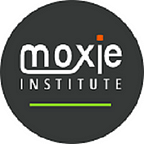
Effective communication is an important skill for leaders in any organization. Executives in particular need to be able to communicate vision, strategy, and key messages clearly and persuasively across the company. However, even experienced leaders can fall into poor communication habits or may lack executive presence, diminishing their leadership impact. Executive communication training can make a major difference by enhancing executive presence and leadership messaging.
What Is Executive Presence?
Executive presence is loosely defined as the ability to project confidence, integrity, and vision when communicating with others. Leaders with a strong executive presence are able to capture people’s attention, convey leadership qualities, and align employees around organizational goals through their communication style and messaging. Executive presence coaching focuses on nonverbal communication like posture, eye contact, and vocal qualities as well as the content of their messaging.
Benefits of Communication Skills Training
Communication skills training tailored specifically to executives has many advantages:
Increased Self-Awareness – Regular assessments and coaching sessions identify current communication gaps and opportunities for improvement.
Powerful Executive Presence – Executive presence coaching builds skills in nonverbal communication, vocal modulation, storytelling, listening and responding effectively in high-stakes situations. Leaders appear more confident, composed, and authoritative after only a few sessions.
Clearer Vision – Executives learn how to craft engaging messaging around the organization’s vision and strategy. Training focuses on understanding audience needs, structuring key speeches and presentations, handling tough Q&A sessions, and monitoring impact.
Enhanced Leadership Branding – Consistent and high quality communication from top executives helps reinforce organizational culture and build their team’s reputation. Plus, employees have more confidence in leadership when messaging is clear and aligned.
Proven Results of Executive Coaching
Studies show communication training yields better business results. Leaders who invest in building communication skills and executive presence are more effective at:
Driving Change – Executives skilled in communication can clearly identify reasons for change, secure buy-in, and motivate action around new initiatives.
Building Trust – Employees are more engaged and productive when leadership communication is transparent, frequent, and empathetic.
Decision-Making – Strong communication enables leaders to gather input and provide clearer direction on priorities and strategy.
Handling Crisis Situations – Leaders under pressure need to tap strong communication skills to reassure stakeholders, manage fallout, and maintain productivity.
Getting Started With Executive Communication Coaching
With busy schedules, executives may feel they do not have time for communication skills training. However, working with an executive coach is a time-efficient way to make rapid improvements. Coaches first assess current communication strengths and areas for growth through questionnaires, speaking assignments, and interviews. They then work one-on-one with their client to set development goals and create customized learning plans.
Coaching formats can include in-person intensive workshops, virtual individual sessions, mock presentations with feedback, and remote check-ins during real speaking engagements. Just a few hours a month with a coach builds skills gradually over time through real-world application. Investing in executive communication coaching delivers a multiplied return for both leaders and organizations.










